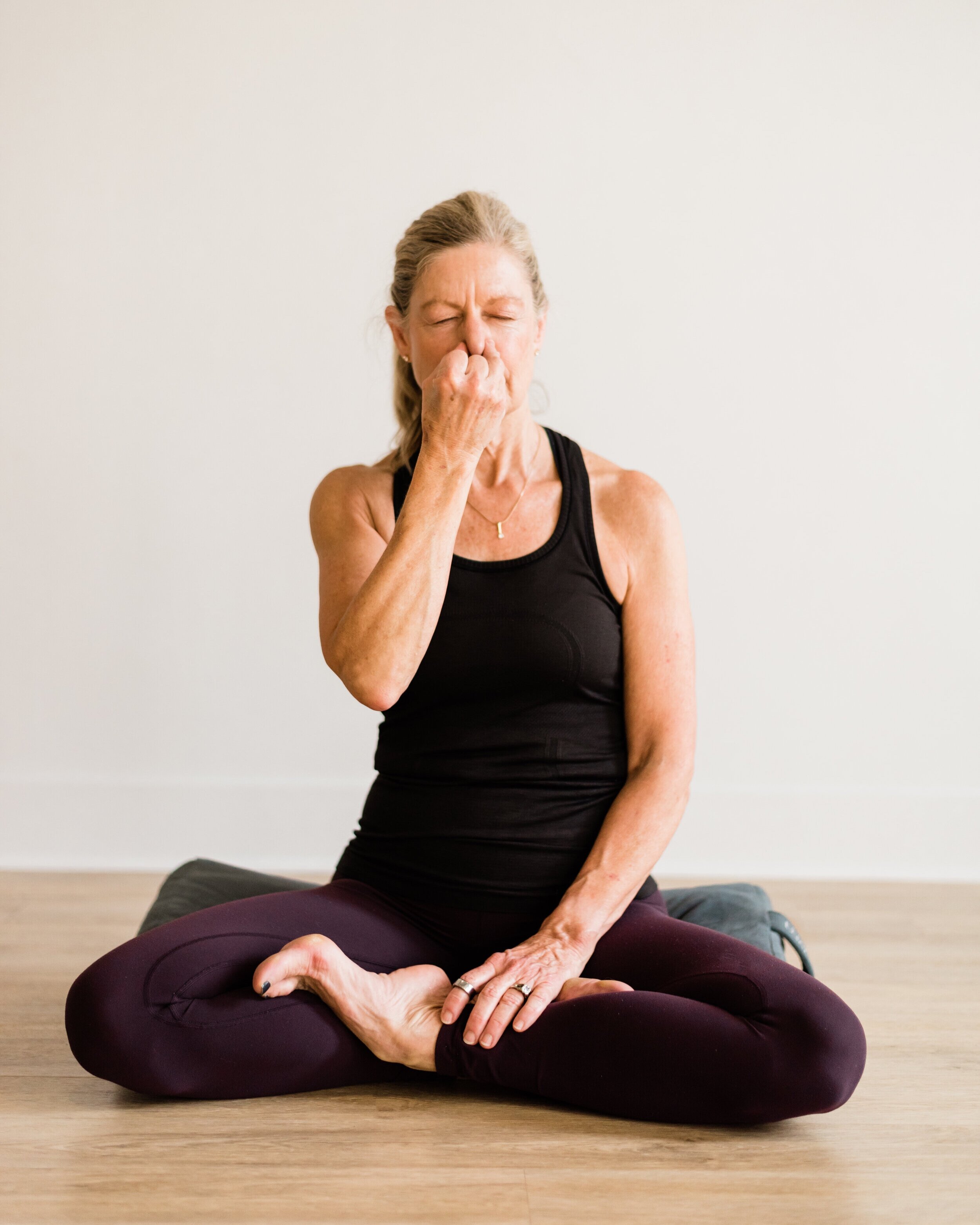Nadi Shodhana (Alternate Nostril Breathing)
Nadi Shodhana (“Alternate Nostril Breathing”)
by VICTORIA HERON
Photo Cred: @AlinaJack
Hi Yogis and Yoginis. Exciting news: Metta’s blog is moving into explorations of pranayama (breathing practices).
There’s really no better time to practice various breathing exercises than right now. Particularly in this time of global pandemic, as the world around us at times feels crazy, scary and unpredictable, using the breath to center and ground ourselves is especially powerful.
In my opinion, one of the most beneficial pranayama practices is alternate nostril breathing, AKA anuloma viloma, AKA nadi shodhana. For those of you interested in the Sanskrit, anuloma viloma translates to “with the grain, against the grain,” and nadi shodhana means “channel cleansing.” The practice helps us go “with the grain” of our innate peace and wisdom, and “against the grain” of those qualities of thought and emotion that cause suffering and imbalance. It can assist in “cleansing” us of the mental, emotional and energetic qualities that stand in the way of well-being.
Well that sounds kinda woo-woo but maybe kinda cool. Are there any more concrete benefits? Maybe supported by research?
Well, I’m really you asked! I’m a bit of a research nerd, so it may not be a surprise that I want you to know what the science says. Drum roll, please:
Studies have shown that alternate nostril breathing decreases anxiety and mental unrest[i], balances activity between the right and left hemispheres of the brain[ii], and reduces blood pressure and heart rate variability. It also appears to generally activate the parasympathetic nervous system [iii] (that’s the rest and digest branch of the nervous system).
Solid evidence explains why anuloma viloma helps us to feel relaxed, more balanced, and just generally good! If that’s not enough reason to practice it, then I don’t know what is!
Ok, you have me convinced. How do I do it?
Here’s a handy step by step guide!
1. Before you begin, it’s helpful to make sure you can breathe easily through both nostrils; if one is congested, the practice can be frustrating. I like to do alternate nostril breathing after a shower or bath since the steam clears the nostrils, or after doing nasal irrigation with a neti pot.
2. Find a quiet place where you can sit undisturbed with upright good posture, ideally for at least 15 minutes, but really any time you can spare is great.
3. Place the index and middle fingers of your dominant hand over the third eye center (between the eyebrows and about ¼ inch up). This is also the location of a very powerful acupuncture point, and if you close your eyes and just feel around this area of the forehead, you will likely be able to notice a slight calming and comforting sensation when your fingers land on the right spot.
4. Take a few slow breaths through both nostrils with the eyes closed, just starting to slow your respiration rate and calm your mind.
5. Gently pinch your right nostril closed from the outside with your thumb and inhale for a count of four.
6. Close the left nostril with your ring finger so both nostrils are now closed. Retain the breath for a count of two (skip the breath retention if you are pregnant).
7. Open the right nostril and exhale for a count of six.
8. Inhale through the open right nostril for a count of four. Close it and hold for a count of two.
9. Open the left nostril and exhale for a count of 6.
10. Repeat steps 5-9 for about 15 minutes or however long you like.
11. End the practice by exhaling out the left nostril, removing your hand from your face and breathing slowly in and out of both nostrils.
12. If you can, end with several minutes of silent seated meditation.
Additional Options and Tips
There are many ways to tailor alternate nostril breathing to create your own preferences and needs.
Rather than having the index and middle finger at the third eye you could instead curl them into your palm.
While alternate nostril breathing is traditionally done with breath retention (aka kumbhaka) at the top of the inhalation, you can omit this step if it feels overly laborious. Or, if you enjoy kumbhaka, you can also pause at the end of the exhalation as well.
Some people find that counting the breath gives the mind something to focus on, while others find it feels rigid. Trust and do what feels right to you. While consciously lengthening the exhalation can help activate the parasympathetic nervous system, you can choose to do equal length inhalations and exhalations (known as sama vritti) if it feels better.
Always do what feels right for your body rather than adhering rigidly to form. If you are pregnant, skip the breath retention at the end of the inhales or exhales.
Enjoy and remember to wash your hands before touching your face!
At Metta we love supporting your health and well-being. Please keep practicing with us online, and don’t forget to share the diverse ways in which you are taking your yoga practice out of our studio with us on Instagram @mettayogamarin.
May you be happy. May you be well. May you be peaceful. May you be free.
FOOTNOTES
[i]Kamath, A., Purval, R., & Shenoy, A. (2017). Effect of Alternate Nostril Breathing Exercise on Experimentally Induced Anxiety in Healthy Volunteers Using the Simulated Public Speaking Model: A Randomized Controlled Pilot Study. Biomed Res Int. Retrieved from https://www.ncbi.nlm.nih.gov/pmc/articles/PMC5660749/
[ii]Stancák, A., & Kuna, M. (1994). EEG changes during forced alternate nostril breathing. Int J Psychophysiol, 18(1). Retrieved from https://www.ncbi.nlm.nih.gov/pubmed/7876041
[iii]Srivastava, R. D., Jain, N., & Singhal, A. (2005). Influence of Alternate Nostril Breathing on Cardiorespiratory and Autonomic Functions in Healthy Young Adults. Indian J Physiol Pharmacol, 49(4). Retrieved from https://www.ijpp.com/IJPP archives/2005_49_4/475-483.pdf
© 2020 Metta Yoga LLC

